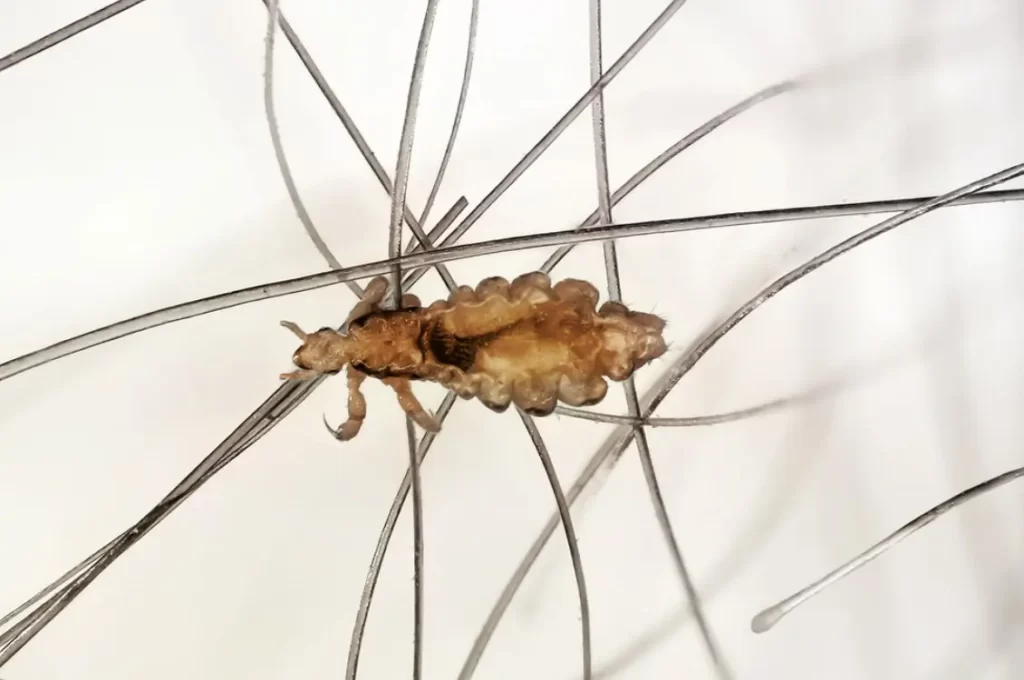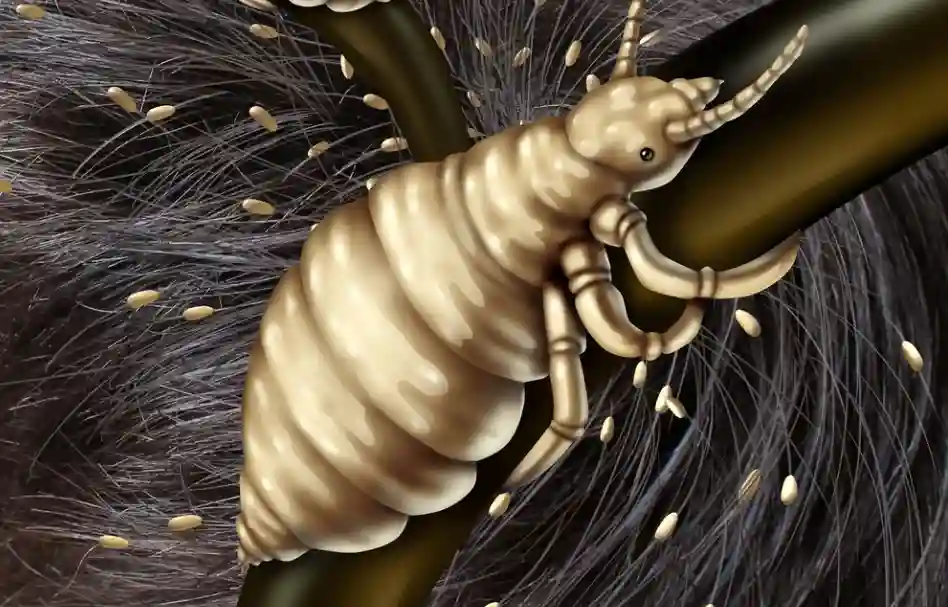Lice infestations affect millions of people all over the world. But what happens when the problem isn’t just the ordinary lice? Get to know “super lice,” a new form of head lice that has spread throughout homes, schools, and entire neighborhoods.
An estimated 6–12 million infestations occur annually among children 3–11 years old in the United States, as reported by the Centers for Disease Control and Prevention. Therefore, there is a high unmet need to prevent and treat lice infestations, especially “super lice”.
This blog post will go over the differences between “lice vs super lice” in detail. We will provide you with a thorough understanding of the subject, answering all your questions.
Seite Inhalt
What is super lice?
Super lice are similar to the typical head lice, but they have evolved resistance to the most common over-the-counter lice treatments, making them more difficult to kill. Super lice are also more contagious, which makes them a greater risk to public health.
They are not a new species, but rather a mutation of the common head louse with resistance to the chemicals used in typical lice treatments.
If you or someone you know has super lice, you should get professional treatment as soon as possible to prevent further spread. Don’t allow these little creatures take over your hair; instead, stay aware and ready to fight super lice!

How common is super lice?
The prevalence of super lice infestations has been demonstrated to be on the rise in recent research, with some estimates placing the percentage at 25% of total head lice prevalence.
Due to the fact that these super lice are not only more resistant to treatment but also more infectious, it is crucial that we learn how they differ from typical head lice.
How big are super lice? (are super lice smaller?)
Super lice are not a new species of lice, but a mutation of the common head lice. Therefore, super lice are pretty much the same size as regular head lice, measuring around 2-3 millimeters in length.
Do super lice have wings?
Just like regular head lice, super lice do not have wings, they are wingless insects; they crawl and move through the hair using their six legs.
How long do super lice live?
Super lice, just like normal head lice, have a lifespan of about 30 days on a human head; aka the food source.
How long do super lice live off the head? When super lice are away from a human host, they can’t survive for more than 24-48 hours on surfaces like clothes or pillows (no food source).
So, it’s important to keep in mind that these kleine Schädlinge are well adapted to living on human scalps, and that’s where they have the best chances of survival.
What states have super lice?
Scientists have identified 25 states with super lice infestations in the United States. The list is as follows:
- Rhode Island
- Arizona
- Missouri
- Ohio
- Maryland
- Kentucky
- Texas
- California
- Massachusetts
- Minnesota
- Florida
- Virginia
- Arkansas
- Georgia
- Illinois
- Indiana
- Alabama
- North Carolina
- Tennessee
- South Carolina
- Kansas
- Maine
- Connecticut
- Washington
- Wisconsin
Are super lice more dangerous than normal head lice?
While lice and super lice represent minimal medical hazards, they can be irritating and uncomfortable. They can cause itching and scratching, as well as social shame.
As a result, lice and super lice are not dangerous but can be annoying. It is also critical to take appropriate procedures to eliminate lice or super lice in order to prevent their spread and discomfort.
Where did super lice come from?
Super lice, like regular lice, are highly contagious and spread through direct contact with hair or head gear of infected individuals.
To prevent the spread, it is important to avoid personal items such as hair brushes and combs, especially in school settings.
Super lice and regular lice do not jump or fly, they move by crawling. Children should be checked for lice if there is an outbreak in their school, even if they aren’t experiencing symptoms.
Lice can also spread through shared clothing or hair accessories that have been recently worn by an infected person. It is important to note that pets such as dogs or cats cannot spread lice.
Do super lice lay more nits?
There is no evidence that super lice produce more nits (eggs) than normal lice. Both varieties of lice lay approximately the same amount of nits every day, with the female louse laying approximately 6 to 8 nits per day.
Do super lice make your hair fall out?
Super lice do not cause hair loss. Lice feed on blood from the scalp, and because they do not burrow or harm the hair shafts, they do not cause hair loss. Lice scratching and irritation, as well as secondary bacterial infection, can cause hair loss.
How to get rid of super lice?
Super lice removal can be more difficult than normal lice removal, but there are a few treatment alternatives available. Here’s an overview of what you can do:
- Start with pyrethrin shampoo or other over-the-counter (OTC) lice treatments if you suspect an infestation.
- Every night, comb your hair with a nit comb and wash and dry linens, clothing, hats, and scarves. After 7 days, repeat the procedure.
- If you still have live lice after two rounds of treatment, you may have super lice and should consult a doctor. They may suggest several therapy choices, such as:
- Ivermectin is an anti-parasite medication that is administered orally. According to a randomized controlled trial (RCT) by Chosidow and colleagues published in N Engl J Med, 95.2% of patients were lice-free on day 15 of therapy (DO NOT USE THIS MEDICATION WITHOUT A DOCTOR CONSULTATION).
- Malathion lotion: the same study (Chosidow and colleagues) used malathion lotion (0.5%) on patients with super lice at days 1 and day 8. The study found that 85.0% of patients had successful removal of lice at day 15 (DO NOT USE THIS MEDICATION WITHOUT A DOCTOR CONSULTATION).
- Spinosad suspension: This is another medication that you apply to dry hair, let on for 10 minutes, and then rinse away. If you still have lice, you simply need to reapply in 7 days (DO NOT USE THIS MEDICATION WITHOUT A DOCTOR CONSULTATION).
- Wet combing: Although there is limited research on wet combing, one study found that it was 50% as effective as applying a topical therapy. The procedure does not kill lice, but it may aid in their removal.
- It’s crucial to get rid of super lice everywhere; cleaning using a vacuum is one method for this. It includes vacuuming pillows, bed, and furniture, etc. This will remove any lice/eggs that have fallen off the head of your kid.
- Hot air therapy is one efficient approach to get rid of super lice. This treatment uses a device similar to a hair drier to dry out lice and their eggs on the scalp by blowing regulated, heated air onto it. Because super lice cannot thrive in dry or hot environments, this therapy is an excellent approach to dehydrate them. The process typically takes 90 minutes. It is vital to highlight that this treatment should only be performed by a professional because it involves specialized knowledge and equipment.
- Apply a generous layer of conditioner to your hair and comb through in small sections from root to tip. Rinse out the conditioner and comb the nit comb through each tiny spot once more. To avoid excessive touch, do it over a sink. Repeat the method every three days for at least two weeks, or until there are no evidence of live lice or nits after four or five combings.
- Other therapies: Some super lice home treatments may be beneficial. One study found that a solution including coconut oil, ylang-ylang, and anise essential oils worked just as well as standard topical therapies. However, these may not be suitable for youngsters, and further research is required.
It’s vital to note that lice should only be treated if they’re active and alive; simply finding nits isn’t enough; these could be a symptom of dead lice that don’t need to be treated.
If you’ve tried over-the-counter drugs and are still having problems, consult your doctor about further options.
Schlussfolgerung
Head lice have evolved resistance to the most common over-the-counter lice treatments, creating a new strain known as super lice that is both more difficult to kill and more contagious.
Super lice are not a different species but rather a mutant form of the common head louse. To effectively combat super lice, it is essential that we are aware of the differences between lice vs super lice. Similarly, preventing the spread and pain caused by lice or super lice necessitates taking effective efforts to eradicate them.
It is recommended to seek professional help for treatment if you suspect a super lice infestation.
Lice vs super lice!
- Wo kann ich Bettwanzenbomben kaufen? - 30. Januar 2023
- Wo kann ich ein Mittel zur Bekämpfung von Bettwanzen kaufen? - 30. Januar 2023
- Wo kann ich Bettwanzenspray kaufen? - 30. Januar 2023
